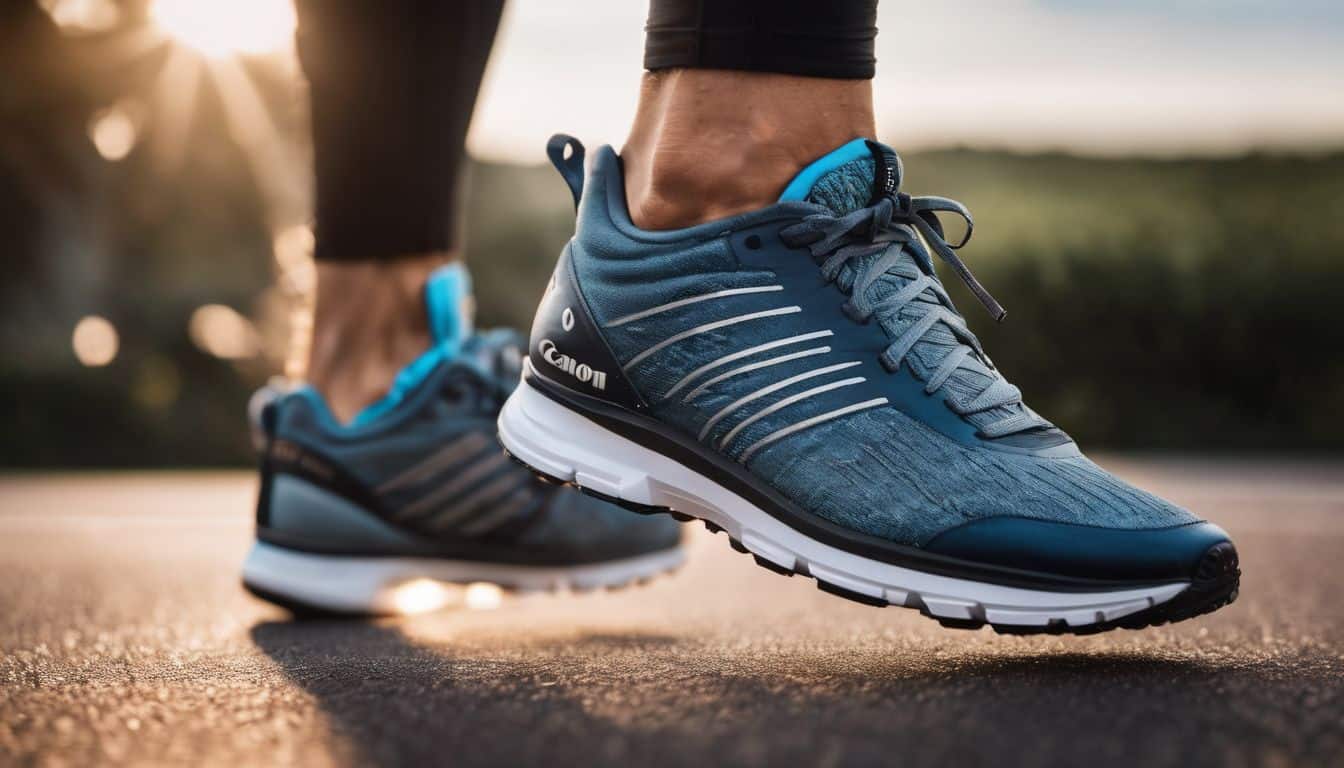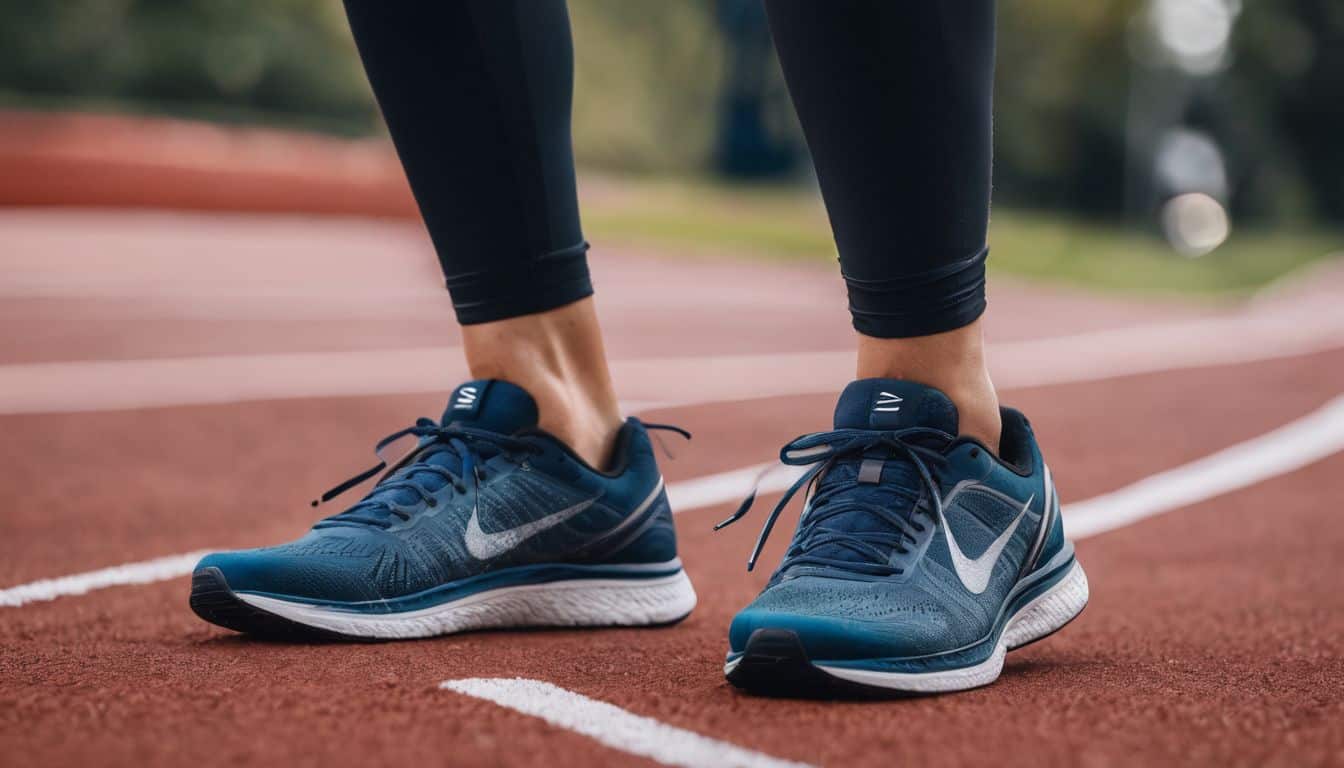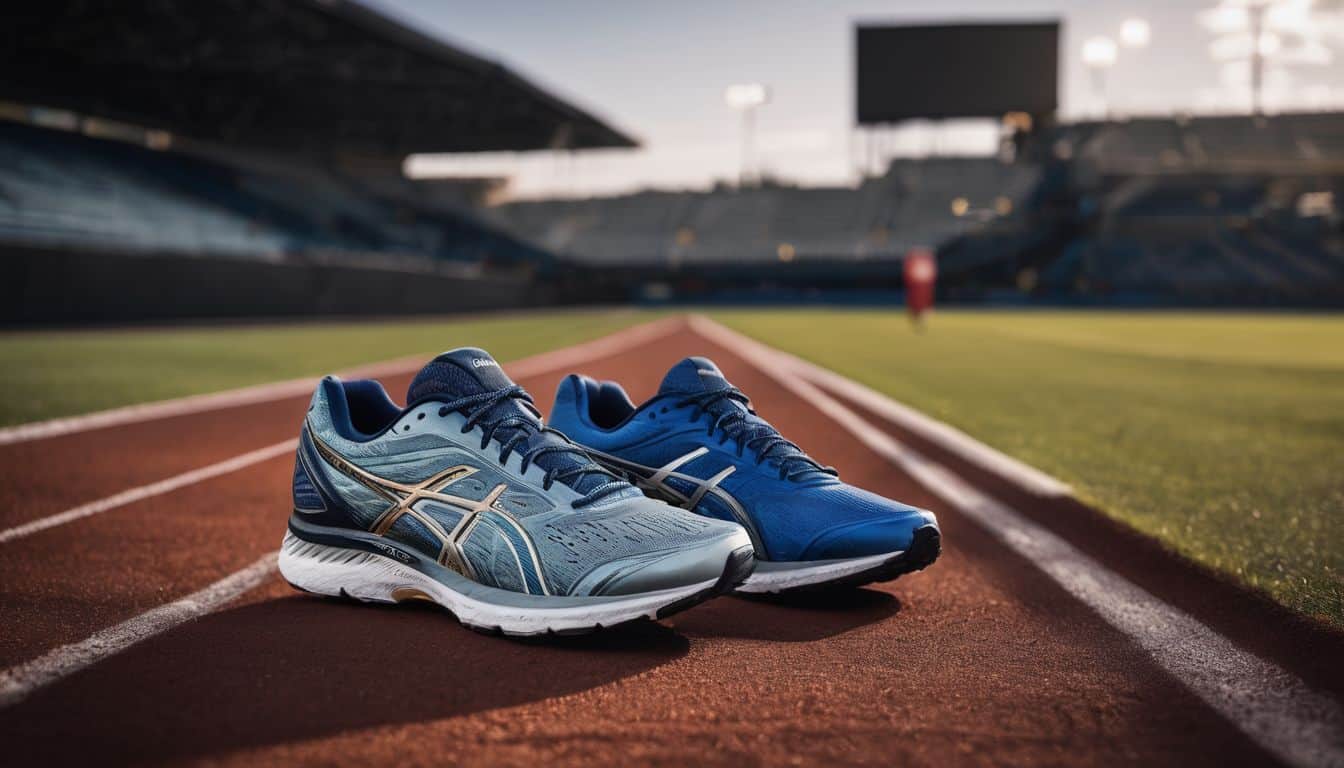Ever found yourself staring at your running shoes, pondering if they’d fare well on the gym floor too? You’re not alone – I’ve asked myself the same question. After sifting through piles of information and doing a whole lot of research, it turns out that the answer isn’t as black-and-white as you’d imagine.
In this article, we’ll delve into the intricacies of running shoes versus training shoes – exploring their unique design elements and how each is optimally engineered for different activities.
So sit tight while we figure out if those trusty runners can double-duty for cross-training!
Key Takeaways
- Running shoes and training shoes have distinct differences in their purpose, function, sole flexibility, heel drop, stack height, and upper construction.
- Using running shoes for training activities is not recommended as they lack the stability and support needed for other types of workouts.
- It is important to choose the right shoe for each specific activity to maximize performance and reduce the risk of injury.
- Running shoes are ideal for running activities and treadmill workouts, providing cushioning, support, and shock absorption.
Difference Between Running Shoes and Training Shoes
Running shoes and training shoes have distinct differences in their purpose, function, sole flexibility, heel drop, stack height, and upper construction.
Purpose and function
Running shoes and training shoes serve different roles. Running shoes absorb shock when your foot hits the ground. They are light, which helps you run fast. On the other hand, fitness footwear provide a stable base for things like lifting weights or doing gym workouts.
These athletic sneakers let your feet move in any direction — not just forward like running shoes do!
Sole flexibility
The soles of your footwear play a key part in how you move. In running shoes, the sole is less flexible. This helps keep my feet stable when I run long distances. The stiff sole cushions my feet from hard hits on the ground.
But what about training shoes? These have flat soles that bend and twist easily. This is great for gym workouts! When I do squats or lunges, the flexible soles help me balance better.
Training shoe soles let me move my feet any way I want! They are built for all types of exercises, not just running.
Heel drop
Heel drop means how much higher your heel is than your toes in a shoe. It changes how we run and walk. Big heel drops can be easier for some people’s knees, but harder on the lower leg.
A shoe with less drop has a flatter sole like most training shoes. Each person might need a different amount of heel drop based on what feels best for them. If you’re used to high-drop shoes, swapping to low-drop can feel strange at first and needs time to adjust.
Stack height
Stack height refers to the amount of cushioning material in a shoe. It can range from barefoot, with minimal cushioning, to maximal cushioning for maximum shock absorption. Generally, higher stack heights provide more cushioning and shock absorption.
Running shoes tend to have higher stack heights compared to training shoes. However, it is important to note that higher stack heights may result in less overall stability during exercises.
The stack height and heel-to-toe drop of a shoe play a significant role in how the shoe feels on your feet and how connected you are to the ground while running or training.
Upper construction
The upper construction of running shoes and training shoes differs in important ways. Running shoes usually have a lightweight and breathable upper, made from materials like mesh or knit fabric.
This design helps to keep the feet cool and comfortable during long runs. On the other hand, training shoes often prioritize support and stability in their upper construction. They may have extra elements like overlays or straps to provide better lateral support for various exercises.
These differences in upper construction can impact both comfort and performance, so it’s essential to consider your specific needs when choosing between running shoes and training shoes.
Is It Ok To Use Running Shoes For Training?

Using running shoes for training activities is not recommended. While running shoes are designed specifically for the repetitive motion involved in running, they lack the stability and support needed for other types of workouts.
When you engage in cross-training exercises or gym workouts that involve lateral movements, jumping, or weightlifting, you need footwear that can provide adequate stability and prevent injuries.
Running shoes have a flexible sole and a higher heel drop to promote forward movement while running. However, this flexibility can be problematic during training sessions where you require more lateral stability.
Additionally, using your running shoes for training can lead to faster wear and tear because they are not built to handle the stress from these types of activities.
To maximize your performance and reduce the risk of injury, it’s important to choose the right shoe for each specific activity. Investing in a pair of dedicated training shoes will ensure that you have the proper support and stability needed for your cross-training workouts.
By doing so, you’ll be able to train effectively without compromising your feet’s health and overall body mechanics.
When to Wear Running Shoes
Running shoes are ideal for running activities, offering cushioning and support for long distances while providing shock absorption to reduce stress on joints. They are also suitable for treadmill workouts as they provide the necessary stability and traction needed for a safe and effective workout.
Benefits for running
As a running enthusiast, I understand the importance of wearing the right shoes for my workouts. When it comes to running shoes, there are several benefits that make them ideal for jogging and other running activities.
Running shoes provide impact absorption, which helps to reduce the strain on your joints and muscles. This can contribute to injury prevention and improve your overall comfort while running.
Additionally, good quality running shoes offer stability and support during your workouts, allowing you to maintain proper form and avoid unnecessary movements that may lead to injuries.
Suitable for treadmill workouts
When it comes to treadmill workouts, it is important to wear the right shoes. For this type of exercise, running shoes are suitable because they provide the necessary cushioning and support for your feet.
These shoes are designed specifically for running and can help prevent discomfort or injuries while on the treadmill. Additionally, wearing nonslip socks can also be helpful in preventing any accidental slipping on the machine.
So, if you’re planning on doing longer distances or regular running sessions on a treadmill, make sure to choose a pair of running shoes that will keep you comfortable and stable throughout your workout.
When to Wear Training Shoes
Training shoes are best suited for cross-training activities that involve intense exercises and require stability and support for various movements.
Benefits for cross-training
Cross-training shoes offer several benefits for cross-training workouts. They are designed to support lateral movements, which are common in these types of workouts. These shoes provide stability and support, allowing you to perform various exercises with confidence.
Whether you’re doing strength training or cardiovascular exercises, cross-training shoes can accommodate both types of workouts. With their minimal heel drop and cushioned design, they offer comfort and help reduce the risk of injuries during your training sessions.
Hoka training shoes are a popular choice for cross-training enthusiasts due to their versatility and supportive features.
Stability and support for various exercises
During various types of exercises, such as weightlifting or high-intensity interval training (HIIT), it is crucial to have stability and support in your footwear. Training shoes are specifically designed with these factors in mind.
They provide the necessary cushioning, motion control, and heel support that running shoes may lack. This ensures proper alignment and helps prevent injuries during lateral movements, jumps, and quick changes in direction.
So when engaging in different exercise routines, it’s important to wear training shoes that offer stability and support for a safer and more effective workout experience.
Potential Issues with Using Running Shoes for Training
Using running shoes for training may lead to potential issues such as lack of stability and traction, as well as faster wear and tear due to intense exercises.
Lack of stability and traction
When it comes to using running shoes for training, one potential issue you may encounter is a lack of stability and traction. Running shoes are designed specifically for running, with a focus on providing cushioning and support for forward motion.
However, when it comes to other types of training exercises, such as plyometrics or exercises that require quick changes in direction, the lack of stability and traction in running shoes can be problematic.
These activities require balance, grip, and stability, which may not be adequately provided by running shoes. It’s important to consider the specific demands of your training routine and choose shoes that offer the necessary grip, support, flexibility, and stability to prevent injuries and enhance your performance.
Faster wear and tear
Using running shoes for training activities can lead to faster wear and tear on your shoes. This is because training exercises involve different movements and may require more lateral stability compared to running.
The repetitive side-to-side motions and higher impact can put additional strain on the shoe material, causing it to deteriorate more quickly. It’s important to monitor the condition of your running shoes regularly, especially if you use them for cross-training or other non-running workouts.
Replace them when you notice signs of significant wear or loss of cushioning to prevent potential injuries and maintain optimal support during your workouts.
Conclusion: Choosing the Right Shoes for Your Workout Needs
In conclusion, while it is possible to use running shoes for training, it may not be the best choice. Running shoes are designed specifically for forward motion and cushioning during long distances.
Training shoes, on the other hand, offer stability and support for various exercises in the gym or intense cross-training sessions. It’s important to choose the right shoes that fit your specific workout needs to prevent injuries and ensure optimal performance.
FAQs
1. Can I use running shoes for training?
Yes, you can use running shoes for training as they provide cushioning and support that is essential for various exercises.
2. Are there any differences between running shoes and training shoes?
Yes, there are some differences between running shoes and training shoes. Training shoes have a more stable base and lateral support to accommodate different movements like jumping, side-to-side movements, and weightlifting.
3. What types of exercises can I do with running shoes?
Running shoes are suitable for activities such as jogging, walking, treadmill workouts, or light gym exercises that don’t involve extreme lateral movements.
4. Is it necessary to get specialized training shoes?
It’s not always necessary to get specialized training shoes unless you’re doing specific activities like cross-training or lifting heavy weights where extra stability is required.
5. Can I wear my running shoes for other sports besides running or training?
While you can wear your running shoes for other sports on occasion, it’s generally recommended to use sport-specific footwear to prevent injuries and ensure optimal performance during the activity.






Leave a Reply